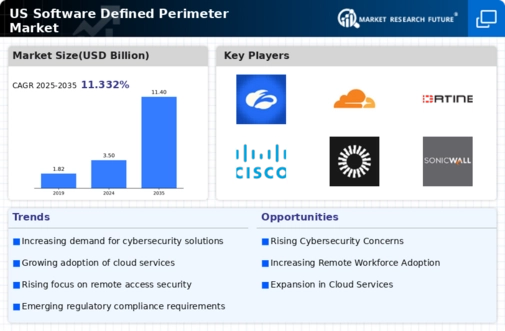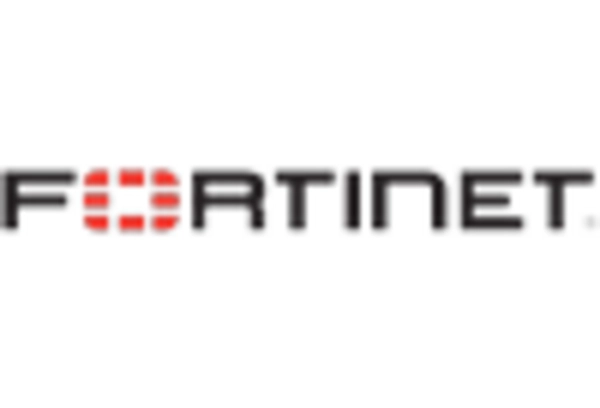Shift Towards Remote Work
the software defined-perimeter market benefits from the ongoing shift towards remote work arrangements.. As more companies adopt flexible work policies, the need for secure access to corporate resources from various locations has become paramount. In 2025, it is projected that remote work will account for approximately 30% of the workforce in the US. This trend necessitates the implementation of software defined-perimeter solutions to ensure secure connections and protect against unauthorized access. By providing a secure environment for remote employees, organizations can maintain productivity while safeguarding sensitive information, thus propelling the software defined-perimeter market forward.
Rising Cybersecurity Threats
the software defined-perimeter market grows due to the increasing frequency and sophistication of cyber threats.. Organizations are compelled to adopt advanced security measures to protect sensitive data and infrastructure. In 2025, it is estimated that cybercrime will cost businesses globally over $10 trillion annually, highlighting the urgency for robust security solutions. The software defined-perimeter market provides a framework that enhances security by limiting access to authorized users only, thereby reducing the attack surface. As organizations face potential data breaches and compliance issues, the demand for software defined-perimeter solutions is likely to rise, driving market expansion.
Increased Regulatory Pressures
the software defined-perimeter market faces heightened regulatory pressures on data protection and privacy.. With regulations such as the California Consumer Privacy Act (CCPA) and the Health Insurance Portability and Accountability Act (HIPAA) in place, organizations are required to implement stringent security measures. Compliance with these regulations often necessitates the adoption of software defined-perimeter solutions, which offer enhanced security features and access controls. As organizations strive to avoid hefty fines and reputational damage, the demand for software defined-perimeter solutions is expected to grow, thereby driving market dynamics.
Growing Demand for Cloud Security
The software defined-perimeter market is experiencing growth driven by the increasing demand for cloud security solutions. As organizations migrate to cloud environments, the need for secure access and data protection becomes critical. In 2025, the cloud security market is expected to reach $12 billion in the US, reflecting a significant investment in securing cloud infrastructures. Software defined-perimeter solutions provide a robust framework for securing cloud applications by ensuring that only authenticated users can access sensitive data. This growing emphasis on cloud security is likely to bolster the software defined-perimeter market, as organizations seek to protect their digital assets in an increasingly cloud-centric landscape.
Technological Advancements in Security Solutions
the software defined-perimeter market is driven by rapid technological advancements in security solutions.. Innovations such as artificial intelligence (AI) and machine learning (ML) are being integrated into software defined-perimeter frameworks, enhancing their effectiveness in threat detection and response. In 2025, the AI in cybersecurity market is projected to reach $38 billion, indicating a strong trend towards intelligent security solutions. These advancements enable organizations to proactively identify vulnerabilities and mitigate risks, making software defined-perimeter solutions increasingly attractive. As technology continues to evolve, the software defined-perimeter market is likely to expand in response to these advancements.

















Leave a Comment